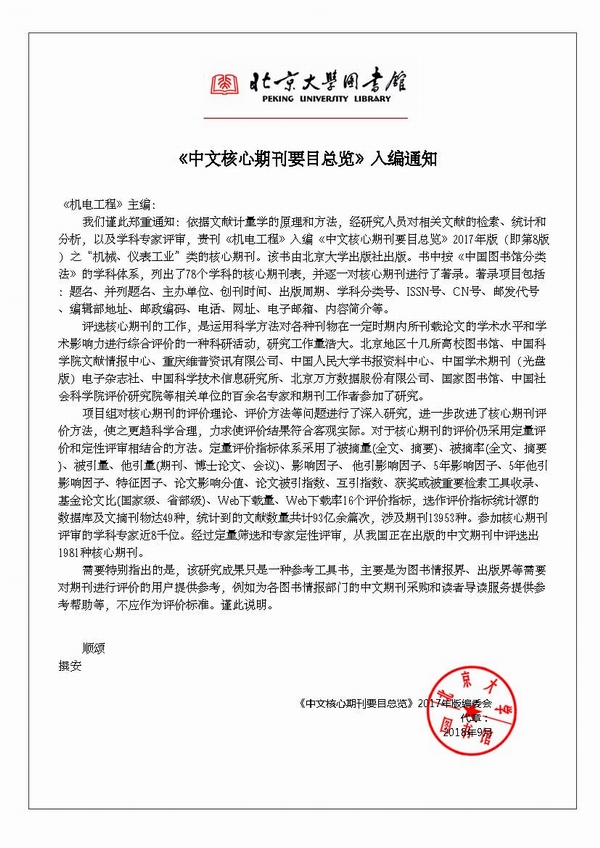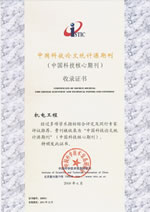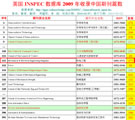
Founded in 1971 >
Chinese Sci-tech Core Periodicals >
British Science Abstracts (SA, INSPEC) Indexed Journals >
United States, Cambridge Scientific Abstract: Technology (CSA: T) Indexed Journals >
United States, Ulrich's Periodicals Directory(UPD)Indexed Journals >
United States, Cambridge Scientific Abstract: Natural Science (CSA: NS) Indexed Journals >
Poland ,Index of Copernicus(IC) Indexed Journals >
International Standard Serial Number:
ISSN 1001-4551
Sponsor:
Zhejiang University;
Zhejiang Machinery and Electrical Group
Edited by:
Editorial of Journal of Mechanical & Electrical Engineering
Chief Editor:
ZHAO Qun
Vice Chief Editor:
TANG ren-zhong,
LUO Xiang-yang
Tel:
86-571-87041360,87239525
Fax:
86-571-87239571
Add:
No.9 Gaoguannong,Daxue Road,Hangzhou,China
P.C:
310009
E-mail:
meem_contribute@163.com
LIN Jiachun, YU Qidi, WANG Peng,SHI Zhaoyao, YUE Huijun
(Beijing Engineering Research Center of Precision Measurement Technology & Instruments, Beijing University of Technology,Beijing 100124,China)
Abstract: Aiming at the influence of the modal of bevel gear transmission error and vibration noise on the measurement results, the dynamic performance of the tester was analyzed and tested. Firstly, Solid Edge was used to model the structure, and ANSYS Workbench was used for modal analysis and harmonic response analysis. Then piezoelectric sensor and acceleration sensor were used to collect dynamic response data, and experimental modal analysis was carried out by using DASP software to collect vibration data under different working conditions. The first six modes of the instrument were obtained by finite element simulation and experimental modal analysis. The results of experimental modal analysis were basically consistent with those of software simulation. The displacement harmonic response curves of the whole structure XYZ in three directions were obtained by simulation. Vibration signals under different working conditions were analyzed, and it was found that there was a clear relationship between vibration signals and instrument modes. The resonant frequency region which the instrument needed to avoid under the working conditions was determined by the modal analysis results, and the connection between the active shaft and the machine tool was determined by the vibration experiment as the weak position of the dynamic characteristics of the instrument. The results of vibration experiments show that under the working conditions of the instrument, the first natural frequency of the instrument should be avoided in the same area as the gear frequency conversion and the rod frequency.
Key words: dynamic characteristic;fihite element analysis;harmohic response;experimental mode;modal analysis







